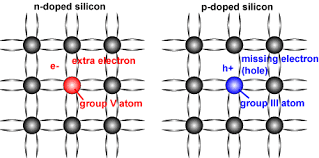Fundamental concepts of the Physics start from this chapter. Basically the terms & concepts which are illustrated in this topic will be used in so many ways because all Physical quantities have units. It is must to measure all Physical quantities so that we can use them. In this topic we will have an over view of different units of different Physical quantities. We will learn the dimension and dependence of the unit of any Physical quantity on fundamental quantities or unit.
1. PHYSICAL QUANTITIES
The quantities by means of which we describe the laws of physics are called physical quantities.
There are two type of physical quantities.
1.1 Fundamental quantities
1.2 Derived quantities
1.1 Fundamental quantities
Physical quantities which are independent of each other and cannot be further resolved into any other physical quantity are known as fundamental quantities. There are seven fundamental quantities.
Fundamental quantity Units Symbol
(a) Length Metre m
(b) Mass Kilogram kg
(c) Time Second s
(d) Electric current Ampere A
(e) Temperature Kelvin K
(f) Luminous intensity Candela Cd
(g) Amount of substance Mole Mol.
1.2 Derived Quantities :
2. UNITS
Definition : Things in which quantity is measured are known as units.
Measurement of physical quantity = (Magnitude) × (Unit)
Ex.1 A physical quantity is measured and the result is expressed as nu where u is the unit used
and n is the numerical value. If the result is expressed in various units then :
(A) n ∝ size of u
(B) n ∝ u2
(C) n ∝ u
(D) n ∝ u
1
Answer : (D)
There are three types of units
2.1 Fundamental or base units
2.2 Derived units
2.3 Supplementary units
2.1 Fundamental or base units:
Units of fundamental quantities are called fundamental units.
2.1.1 Characteristics of fundamental units:
(i) they are well defined and are of a suitable size
(ii) they are easily reproducible at all places
(iii) they do not vary with temperature, time pressure etc. i.e. invariable.
(iv) there are seven fundamental units.
2.1.2 Definitions of fundamental units:
1 Metre :
The distance travelled by light in Vacuum in 1 second is called 1m.
2 Kilogram :
The mass of a cylinder made of platinum iridium alloy kept at international bureau of weights and measures is defined as 1kg.
3 Second :
Cesium -133 atom emits electromagnetic radiation of several wavelengths. A particular radiation is selected which corresponds to the transistion between the two hyperfine levels of the ground state of Cs - 133. Each radiation has a time period of repetition of certain characteristics. The time duration in 9, 192, 631, 770 time periods of the selected transistion is defined as 1s.
4 Ampere :
Suppose two long straight wires with negligible cross-section are placed parallel to each other in vacuum at a seperation of 1m and electric currents are established in the two in same direction. The wires attract each other. If equal currents are maintained in the two wires so that the force between them is 0.0000002 newton per meter of the wire, then the current in any of the wires is called 1A. Here, newton is the SI unit of force.
5 Kelvin :
The fraction 1/273.16 of the thermodynamic temperature of triple point of water is called 1K.
6 Mole :
The amount of a substance that contains as many elementary entities (Molecules or atoms if the substance is monoatomic) as there are number of atoms in .012 kg of carbon - 12 is called a mole. This number (number of atoms in 0.012 kg of carbon-12) is called Avogadro constant .
7 Candela:
The S.I. unit of luminous intensity is 1cd which is the luminous intensity of a blackbody of surface area 1/600,000 metre square placed at the temperature of freezing platinum and at a pressure of 101,325 newton per meter square, in the direction perpendicular to its surface.
Different quantities with units. symbol and dimensional formula,

















